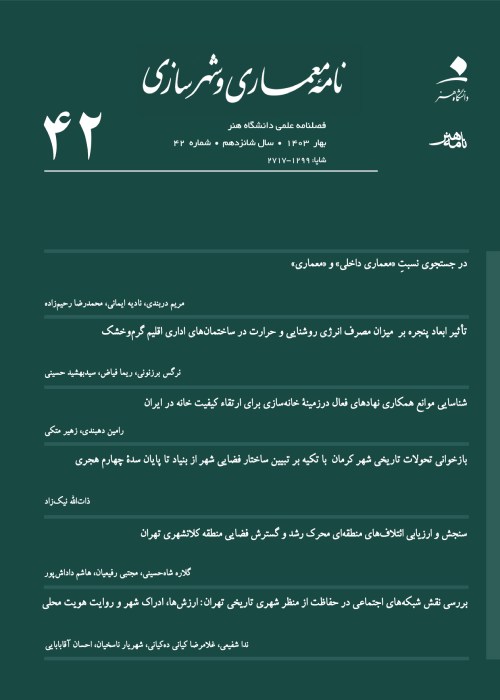Comparative Analysis of Architectural Education in America and Iran According to the Three Behaviorism, Cognitivism and Constructivism Learning Theories
Author(s):
Article Type:
Research/Original Article (دارای رتبه معتبر)
Abstract:
Iran is in the period of transition from tradition to modernity. This shift is evident in the universities of this country, particularly the architecture faculties, which are one step ahead in embracing modernity. Especially in the art faculties, where there is more freedom of action and there is an attempt to imitate the education of modern and sometimes post-modern societies. However, due to lack of necessary infrastructure for education in these societies, there are many problems. For example, the academic architecture education in Iran and America, which are the subject of the current article, were modeled after the architecture of the French University of Boraz, but the same method is used in the universities of Iran, with a slight change to the approved curriculum. The Ministry of Science has overseen the transformation of the term system into a workshop and vice versa. This change has involved scattered and repetitive experiences, disconnected from cultural and social characteristics, which have continued until now. However, in architecture school of Western countries, especially in the America, due to the societal progress and the post-modern era, the educational process of Bouzar University in France, which had a professor-centered education, has been abandoned and learning environment that relies on cooperation and learning from peers have been replaced, which requires flexible spaces and appropriate teaching methods. Architecture teaching and learning has gained a lot of attention in recent years. Combining architectural education with learning theories and their characteristics helps purposeful education and its improvement. This research aims to study the experience of architectural education in the two countries of Iran and America based on three Behaviorism, Cognitivism and Constructivism theories. The method used in this research is qualitative and phenomenological and is based on the purposeful sampling of eight professors of universities in Iran and America. The findings of this research have been shown in the form of two explanatory codes (academic education experience and academic environment experience) obtained by extraction from 115 descriptive codes, 12 interpretive sub-codes, and 6 interpretive codes. The findings indicate that architectural education in Iran is moving from the characteristics of behaviorism theory to cognitivism and architecture education in America is moving from the characteristics of cognitivism theory to constructivism. The experiences of the participants in this interview indicated that there is an obvious difference between the architectural education of Iran and America as developing and developed countries. The most fundamental differences are existence of a professor-oriented educational system, with centrist and general topics, determining role of professors and the role of inclusiveness, insufficient equipment and technology in Iranian universities. In contrast, the universities of America feature a student-oriented educational system, with regional and practical topics, the role of professors as facilitators, students as creators of knowledge, being equipped with technology and advanced equipment. Finally, solutions have been proposed to overcome the current problems of architecture education in Iran.
Keywords:
Language:
Persian
Published:
Journal of Architecture and Urban Planning, Volume:16 Issue: 41, 2023
Pages:
99 to 124
magiran.com/p2662089
دانلود و مطالعه متن این مقاله با یکی از روشهای زیر امکان پذیر است:
اشتراک شخصی
با عضویت و پرداخت آنلاین حق اشتراک یکساله به مبلغ 1,390,000ريال میتوانید 70 عنوان مطلب دانلود کنید!
اشتراک سازمانی
به کتابخانه دانشگاه یا محل کار خود پیشنهاد کنید تا اشتراک سازمانی این پایگاه را برای دسترسی نامحدود همه کاربران به متن مطالب تهیه نمایند!
توجه!
- حق عضویت دریافتی صرف حمایت از نشریات عضو و نگهداری، تکمیل و توسعه مگیران میشود.
- پرداخت حق اشتراک و دانلود مقالات اجازه بازنشر آن در سایر رسانههای چاپی و دیجیتال را به کاربر نمیدهد.
In order to view content subscription is required
Personal subscription
Subscribe magiran.com for 70 € euros via PayPal and download 70 articles during a year.
Organization subscription
Please contact us to subscribe your university or library for unlimited access!



